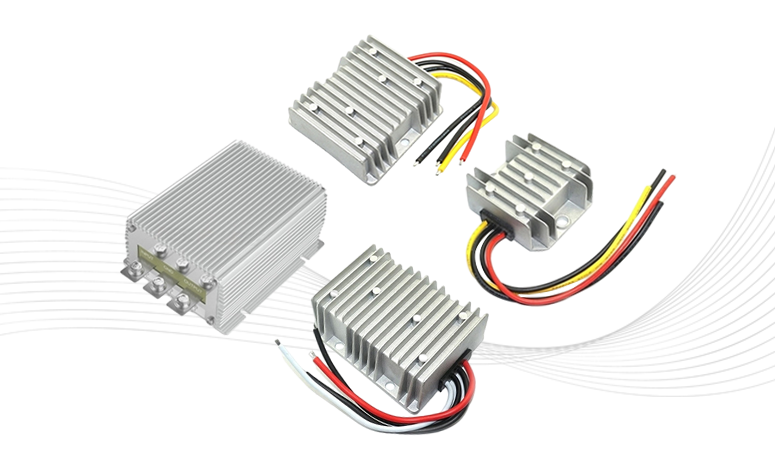Application of Boost DC-DC Converters in Power Banks
Power banks (portable chargers) have become indispensable electronic devices in modern life, providing on-the-go charging for smartphones, tablets, and other gadgets. However, the internal battery voltage of a power bank is typically 3.7V (for lithium-ion batteries), while most devices require 5V or higher for charging. So, how does the 3.7V battery voltage get boosted to 5V? This is where the boost DC-DC converter (Boost Converter) comes into play. This article explains the role, working principle, and key advantages of boost DC-DC converters in power banks.

1. Why Do Power Banks Need a Boost DC-DC Converter?
The core component of a power bank is a lithium-ion battery, which has a nominal voltage of 3.7V (around 4.2V when fully charged and 3.0V when nearly depleted). However, the standard USB charging voltage is 5V, meaning the battery voltage must be increased to 5V to power external devices. If the battery's 3.7V were used directly, it would not meet the charging requirements of most devices, resulting in extremely slow charging or even failure to charge. Therefore, the boost DC-DC converter plays a vital role in power banks.
2. How Does a Boost DC-DC Converter Work?
A boost converter is a type of switching power supply circuit that rapidly switches a transistor (such as a MOSFET) on and off, working in conjunction with an inductor and capacitor to store and release energy, thereby increasing the input voltage to a higher output voltage. Its basic operation consists of two phases:
- Switch ON Phase: The transistor (MOSFET) is turned on, allowing current to flow through the inductor, which stores energy. During this phase, the diode is reverse-biased and blocks current, so the load is powered by the output capacitor.
- Switch OFF Phase:The transistor is turned off, and the inductor releases its stored energy, generating a back electromotive force (EMF). Since current cannot change instantaneously, the inductor's voltage adds to the input voltage, boosting the output. The diode conducts, allowing current to flow to the load while charging the output capacitor.
By adjusting the duty cycle (the ratio of ON to OFF time), the output voltage can be precisely regulated. In power banks, the boost converter typically raises the 3.7V battery voltage to a stable 5V output.
3. Key Roles of Boost Converters in Power Banks
1. Providing a Stable 5V Output: The primary function of a power bank is to deliver a steady 5V output to charge devices. The boost converter dynamically adjusts the output voltage, ensuring it remains at 5V even as the battery voltage drops during discharge (e.g., from 4.2V to 3.0V).
2. Improving Charging Efficiency:Older voltage regulation methods (such as linear regulators, or LDOs) were inefficient, but boost converters use switching technology, achieving efficiencies of 85% to 95%. This means less energy is wasted, extending battery life.
(3)(3) Supporting Fast Charging Protocols:Modern power banks often support fast-charging technologies (e.g., QC, PD), which may require higher voltages (9V, 12V, etc.). The boost converter can adjust its duty cycle to provide different voltages, enabling fast charging.
4. Typical Boost Converter Circuit in Power Banks
- Inductor (L): Stores energy and enables voltage boosting.
- Transistor (MOSFET): Rapidly switches to control energy transfer.
- Diode (or synchronous rectifier MOSFET): Prevents reverse current flow, improving efficiency.
- Output Capacitor (C): Smoothens the output voltage, reducing ripple.
- Control IC: Monitors input/output voltage and adjusts the duty cycle for stable output.
5. Future Trends in Boost Converter Technology
- Higher Efficiency: Synchronous rectification reduces diode losses.
- Smaller Size: More integrated designs (e.g., chips with built-in MOSFETs and inductors).
- Smarter Regulation: Dynamic voltage adjustment for different fast-charging protocols. Conclusion
The boost DC-DC converter is the core component that enables power banks to function effectively, efficiently stepping up the battery’s 3.7V to 5V or higher for stable device charging. As technology advances, boost converters continue to improve in efficiency, size, and intelligence, paving the way for even faster and longer-lasting power banks. If you ever open up a power bank, you'll find that the tiny boost converter chip on its circuit board is the real "magic" behind its functionality!


